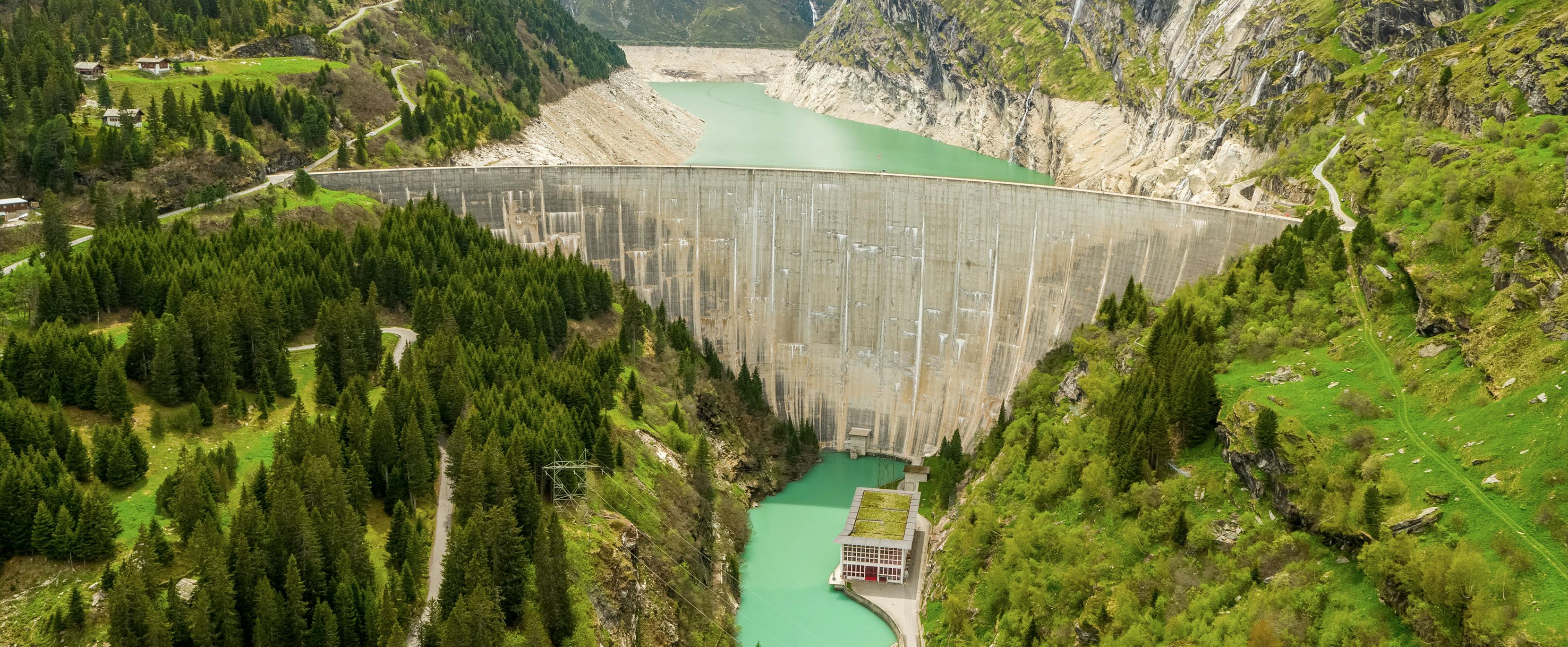
Hardly a day goes by without the terms «power system failure» and «power shortage» being used in the media. Despite the fact that they do not mean the same thing, the terms are often mixed up or used synonymously. Let’s clear up any confusion: in the event of a power system failure, there is enough electricity to meet demand in principle. However, supply is interrupted due to a chain of unfortunate circumstances. In a power shortage, on the other hand, there is not enough electricity to meet all the demand.
In the event of a power system failure, there would in fact be enough electricity available.
Power shortages
As the term indicates, if a power shortage occurs, there is a lack of electrical energy in the system. Existing production capacities are therefore insufficient to meet the demand. In its national risk analysis «Disasters and Emergencies in Switzerland» in November 2020, the Federal Office for Civil Protection considered power shortages to be the greatest risk faced by Switzerland, with serious consequences for the economy and society. The risk increases towards the end of winter.
In summer, Switzerland is able to comfortably meet its electricity requirements with domestic production, and even exports energy. The situation in winter is different, however. At this time of year, Switzerland is dependent on imports. This is one of the main reasons why networking and close cooperation with Europe are so important.
But why is it that too little electricity is generated in some places in Switzerland during winter? Electricity generation is heavily dependent on the weather situation. For example, if water levels in rivers are low due to long dry spells, run-of-river power stations produce less electricity. The same applies to storage power plants: a dry summer or autumn means that the water levels in dams are low and water reserves are limited. If the temperatures drop and large power plants also fail, the situation will worsen. Switzerland will then become even more dependent on imports. However, this necessitates sufficient production capacity in Europe. In the winter months, around 80 percent of electricity is imported at high-voltage level (380 kV). To supply Switzerland with the energy it requires, the imported electricity must first be transformed to a lower voltage level (≤ 220 kV). For this reason, Swissgrid – which is responsible for grid-related security of supply – has made targeted efforts to increase import capability, including, for example, the installation of new 380-kV transformers in various substations.
The Swiss Federal Electricity Commission (ElCom) monitors and supervises developments in the electricity markets with a view to ensuring secure and affordable supply in all parts of the country. If there is any indication of a significant threat to domestic security of supply in the medium or long term, ElCom proposes measures to the Federal Council. If a power shortage arises, the «Organisation for Supply of Electricity in Extraordinary Situations», or OSTRAL for short, takes action as instructed by the Federal Office for National Economic Supply. The federal government then orders measures that ensure a balance between production and consumption at a reduced level.
Power system failures
In contrast to a power shortage, during a power system failure there is usually enough energy available to meet demand. However, a chain of unfortunate circumstances means that the energy can no longer be transported from the power plant to consumers. If, for example, a natural event causes grid elements to fail, this can result in other elements being overloaded. These are then automatically disconnected.
The transmission grid is one of the most critical infrastructures in Switzerland. As its operator, Swissgrid is prepared for the possibility of an undesirable event arising at any time. Despite any shocks that may occur, it must be possible to continue operations without disruption. On the one hand, it is important for Swissgrid to prevent damage. This is achieved via ongoing maintenance and modernisation of the infrastructure, for example. On the other hand, if damage occurs, the grid company must maintain operation and restore the infrastructure to a sustainable condition. The topic of «safety» is part of Swissgrid’s corporate strategy.
The redundant design and operation of the transmission grid supports the resilience of the system. It is possible for individual grid elements to fail without endangering the stability of the entire system. It is of the utmost importance that an outage of one element does not cause a domino effect or affect other grid elements. Swissgrid operates the grid according to what is called the n-1-principle. It states that if one grid element fails, no other element may be overloaded. Ensuring the n-1-principle begins long in advance during the grid planning stage. Forecast calculations can be used to predict the loads on individual grid elements using a model. The planning is continuously improved and adapted all the way up to real-time operation. If an n-1 violation occurs in real-time operation or is foreseeable in advance, Swissgrid takes measures to eliminate the congestion.
Swissgrid expects the grid to be restored around 24 hours after a major disturbance. The processes involved are known and grid restoration is regularly practised with the relevant partners.
Power shortages and power system failures – Swissgrid does its utmost to prevent both scenarios.






